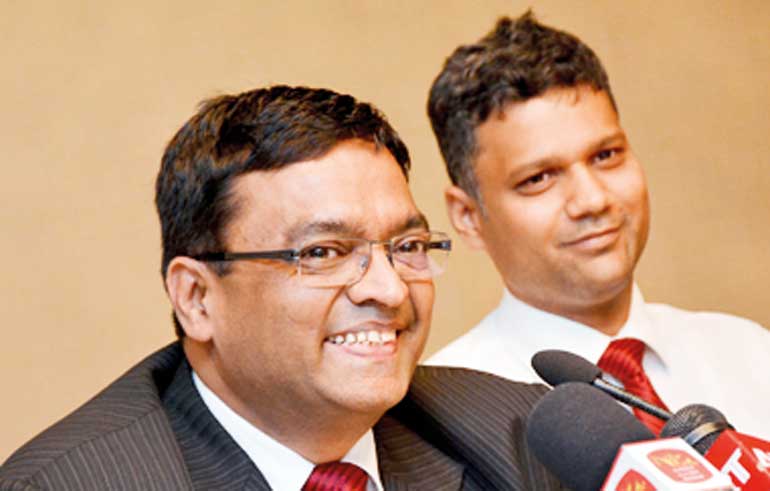Saturday Apr 20, 2024
Saturday Apr 20, 2024
Thursday, 28 January 2016 01:10 - - {{hitsCtrl.values.hits}}
By Uditha Jayasinghe
Upgrading crucial lines of Sri Lanka’s railway system could cost the Government up to $4.5 billion but the move will provide a significant impetus to economic growth, a railway expert said yesterday.
Ircon International, a fully owned company of the Indian Government, is on the verge of marking seven years in Sri Lanka, having completed upgrading to the tsunami railway line and the much publicised northern railway link.
The company will remain in Sri Lanka for two more years to oversee its former projects, train personnel and conduct maintenance.
Similar upgrades to the railway lines to Kandy, Omanthai and Trincomalee would increase connectivity and fast track transport at a cheaper cost to the country, opined Ircon Project Manager in Sri Lanka S.L Gupta.
 Ircon International Ltd Project Director S.L Gupta (left) addressing the media. Ircon International Ltd Deputy General Manager Raman Singla looks on. Pic by Upul Abayasekara
Ircon International Ltd Project Director S.L Gupta (left) addressing the media. Ircon International Ltd Deputy General Manager Raman Singla looks on. Pic by Upul Abayasekara
“The timely execution and high-quality of work provided by IRCON has been widely appreciated in Sri Lanka. We at IRCON have played a significant role in Sri Lanka’s railway infrastructure development by mobilising huge fleets of machinery and manpower for the restoration of the railway lines in the Northern Province.”
Pointing out that rail transport is faster and more efficient than vehicles Gupta insisted that Sri Lanka’s economic growth would benefit from upgrading existing tracks, which move at 40-60 kilometres per hour, to 100-120 kilometres per hour.
“With the completion of the Northern Province railway lines, IRCON is very keen to assist Sri Lanka Railways in any of its future infrastructure development projects in line with the priorities of the railway transport sector,” he added.
The company also rejected allegations the northern railway projects could have been completed at lower cost and insisted any repairs were “teething issues,” that were being ironed out by Ircon without any extra payment from the Sri Lankan Government.
Earlier media reports indicated that 4.2% or 8,000 out of 140,000 sleepers used to build the northern track had cracks in them and Ircon is also planning to replace five bridges later this year after found painting, fabrication and welding defects in them.
“The issues are with our suppliers. We have done our best to ensure that the construction is done to international standards and the project was finished well ahead of schedule,” Gupta noted in response to questions from the journalists.
The Sri Lankan Government invited IRCON to submit a proposal for reconstruction of the Northern Province railway lines in 2009. When former President Mahinda Rajapaksa visited India in June 2010 and through a Joint Declaration, the two Governments announced that they would extend a line of credit of $ 800 million for the restoration of the railway lines and the installation of the signalling and telecommunication system in the Northern Province.
IRCON then proceeded to undertake the reconstruction of 265 km of the Northern Railway lines in Sri Lanka, funded by the Government of India Lines of Credit in stages with the first segment of the Northern Railway Line, namely the re-constructed railway track from Medawachchiya to Madhu Road, being handed over to the Government of Sri Lanka on 14 May 2013.
Gupta went on to say that the second segment from Omanthai to Kilinochchi was inaugurated on 14 September 2013 by the President of Sri Lanka, undertaking a train journey in the famous Yaldevi. Subsequently the Kilinochchi to Pallai section was handed over for commercial operations on 4 March 2014.